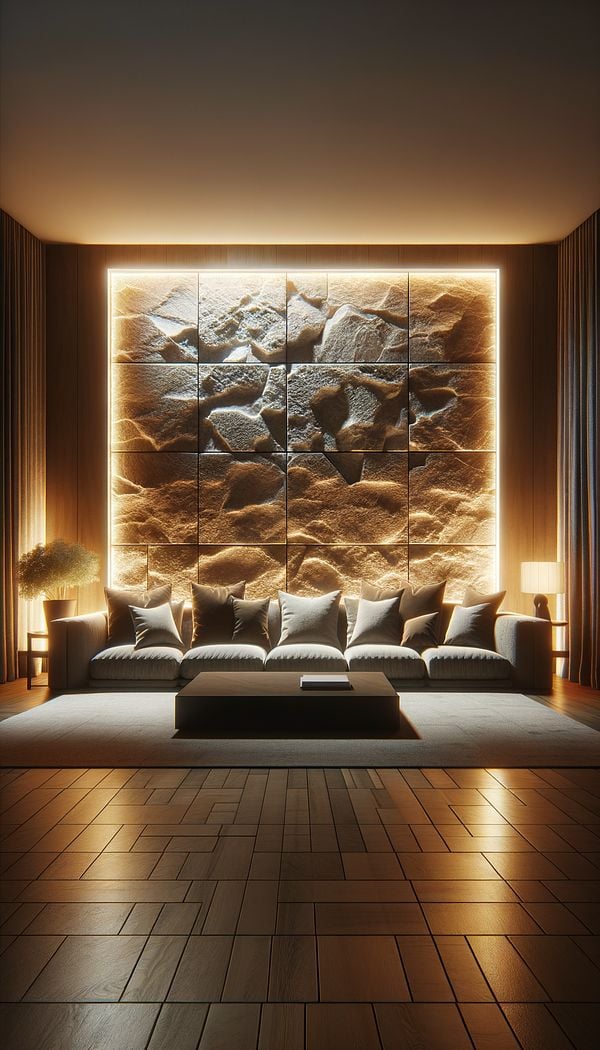What is Backlighting?
Backlighting is a lighting technique used to illuminate objects from behind.
Description
Backlighting is a captivating and practical lighting technique that involves positioning a light source behind an object or scene to create a striking visual effect or to enhance visibility. This method can add depth and dimension to a space, create mood, highlight architectural features, or produce a dramatic silhouette of the object being illuminated. Unlike frontal lighting, which can sometimes create a flat appearance, backlighting adds a layer of sophistication and intrigue by drawing attention to the contours and textures of the object.
In interior design, backlighting is often used in various applications, from backlighting a piece of art, a decorative panel, or a translucent material, to accentuating the outlines of furniture or architectural elements like sculptures or textured walls. It can also enhance the ambiance of a room by adding a soft, diffused glow that contrasts sharply with areas outside the backlighting effect, thereby focusing the viewer's attention on specific areas or items.
Factors to consider when implementing backlighting include the intensity and color temperature of the light, as well as the positioning relative to the object. The choice of light source, whether it be LED strips, fluorescent tubes, or other, should complement the design goals and the specific requirements of the space.
Usage
Backlighting is commonly seen in modern kitchens and living rooms, where it is used to illuminate backsplashes or wall-mounted units. It also finds application in entertainment centers, highlighting the edges of TVs or monitors, and in bathrooms, where it adds a luxurious glow to mirrors and vanities. Moreover, backlighting can be ingeniously applied in outdoor settings, casting an ethereal light on landscape features.
FAQs
-
Can I use backlighting in any room?
Yes, backlighting can be effectively used in any room, given that the positioning, intensity, and color temperature of the light are carefully chosen to suit the space's style and purpose.
-
Is backlighting energy efficient?
The energy efficiency of backlighting largely depends on the type of light source used. LED lights, for example, are known for their low energy consumption and long lifespan, making them an energy-efficient choice for backlighting.
-
How does backlighting affect the mood of a room?
Backlighting can significantly affect the mood of a room by creating a focal point, adding depth, and enhancing the ambiance. It can emit a soft, subtle glow that invokes tranquility or a dramatic effect that adds an element of sophistication and intrigue.
Practical Application
When planning to incorporate backlighting into a design, consider the object or area you aim to highlight and the desired effect. Use LED strips for a subtle, even glow or opt for more direct light sources for a dramatic silhouette. Experiment with color temperatures to match the mood or aesthetic of the room—warmer lights for a cozy feel and cooler lights for a more modern look. Remember to consider the placement of the light source to avoid unwanted shadows and to achieve the best illumination effect.
-
CFL - Compact FluorescentCFL, or Compact Fluorescent, refers to a type of energy-saving light bulb.
-
Primary BedroomThe primary bedroom is the largest and most feature-rich bedroom in a home.
-
LayeringLayering in interior design is the process of adding multiple elements together to create depth, interest, and balance within a space.
-
Bed CanopyA bed canopy is a decorative covering suspended over a bed.
-
LuminanceLuminance is the intensity of light emitted from a surface per unit area.
